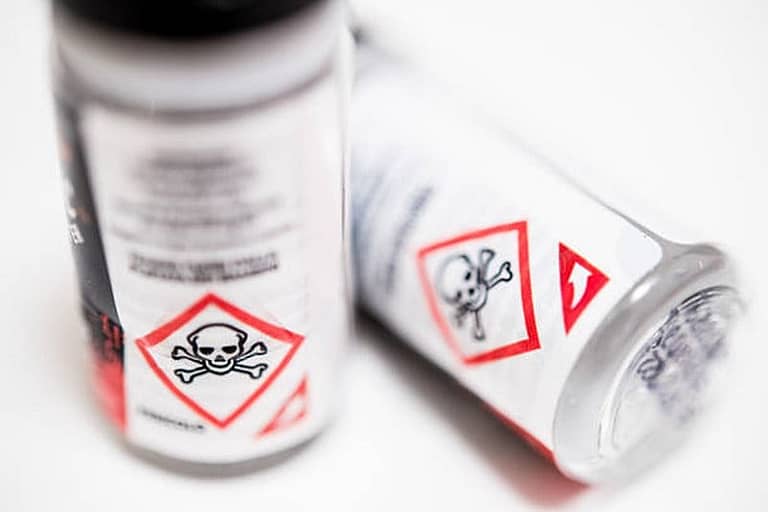The third full week in March each year is National Poison Prevention Week. This event is sponsored by the U.S. Department of Health and Human Services, Health Resources and Services Administration, and is dedicated to raising awareness about poison control centers and the poison helpline (1-800-222-1222). This is great time to consider whether or not you’re prepared for what to do if there is a workplace poisoning at your facility.
How can chemicals used in the workplace cause a poisoning?
For a chemical to cause harmful effects, it must first enter the body. Inhalation is the most common way that chemicals enter the body in the workplace. In addition, workplace chemicals may also be accidentally swallowed if food, drink, hands, or gloves become contaminated. Chemicals may also be accidently injected from a needle, broken glass, or other sharp object. Some chemicals can also pass through the skin into the blood stream in high enough concentrations to be poisonous. The eyes can also be a route of entry, although generally less significant.
Which chemicals are most likely to be poisonous?
Substances that are poisonous are generally those that are considered to be highly toxic, specifically those with a high degree of acute toxicity as defined in the OSHA Hazard Communication Standard and OSHA Lab Standard. Poisonous chemicals may be fatal, or cause damage to target organs, as a result of a single exposure or exposures of short duration. Examples of poisonous chemicals commonly used in a laboratory setting include sodium cyanide, hydrofluoric acid, and sodium azide.
What should be done in the event of a poisoning, or suspected poisoning?
In a poison emergency, call Poison Control at 1-800-222-1222. If the person has collapsed or is not breathing, call 911 for an ambulance.
According to the Massachusetts and Rhode Island Poison Control Center, you should take the chemical container with you to the phone, if safe to do so, as you may be asked to read information from the label including the name of the chemical.
You also will be asked to give other information including: symptoms related to the poisoning, the time of the poisoning, the amount of the chemical, and the victim’s age and weight.
The Poison Control Center phone number should be readily available in the workplace such as on emergency phone lists. Procedures for responding to medical emergencies, including poisonings, should also be addressed in a facility’s Emergency Action Plan and other relevant safety manuals and documents. In addition, procedures for responding to poisonings should be reviewed during initial and refresher trainings.
The goal is to prevent workplace poisonings before they occur! This is done by implementing the appropriate engineering controls, administrative controls, and personal protective equipment as we’ve written about in previous in bogs including the Hierarchy of Controls.
For additional information on preventing workplace poisonings, or for guidance on implementing the appropriate emergency response procedures should a workplace poisoning occur, please email us at [email protected].
This blog was written by Beth Graham, Associate Director of Quality, Research, & Training at Safety Partners.


